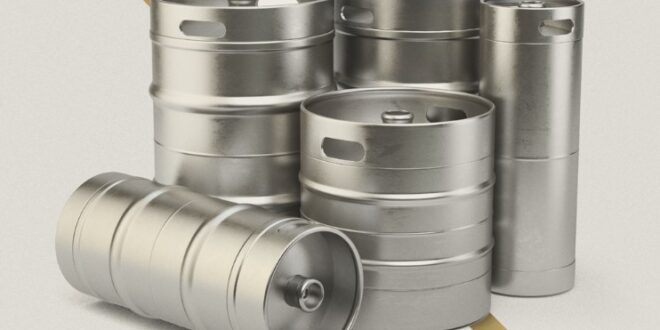Keg beer is becoming increasingly popular with home brewers. These barrels are economical, easy to store and transport, and keep the beer fresh for a longer period.
In this article, we will tell you everything you need to know about beer kegs, including the available sizes, types, and prices of such equipment.
Whether you are an experienced home brewer or just starting your way in this field, this guide will help you navigate the variety of beer kegs and bring the preparation of alcoholic beverages to a new level.
Beer Keg Types and Their Differences
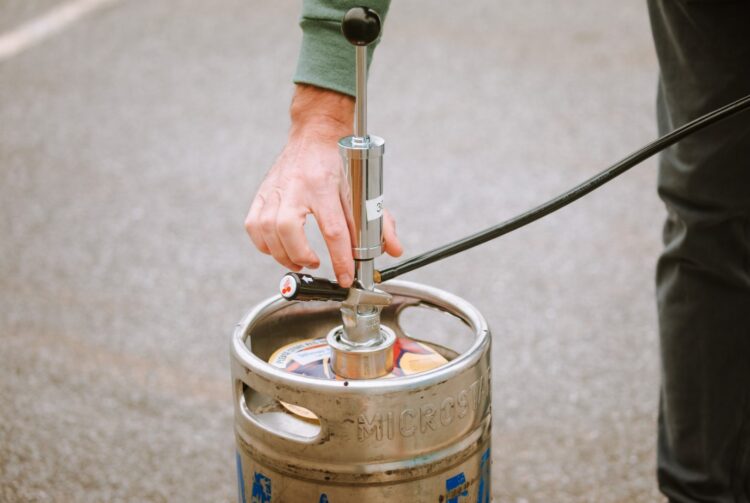
When it comes to serving beer, most brewers prefer to work with kegs.
If you also want to experience all the advantages of using these barrels. First, let’s figure out what size of containers is suitable for home brewing.
– Ball lock keg
This barrel is also known as the Corny keg. It was originally used in the production of carbonated beverages in the 1940s. Today it is a popular choice for homebrewers and small breweries.
You can use it both to test a new recipe and to brew a limited batch of beer.
Ball-lock keg is one of the smallest tanks used in homebrewing.
In this category, there are the following dimensions: 1.5 gallons (6 liters), 2.378 gallons (9 liters), 3 gallons (11.355 liters), 5 gallons (18.925 liters), and 10 gallons (37.85 liters). All these kegs are made of stainless steel.
The most popular capacity is 5 gallons. Barrel size: 23×9″ allows you to place it even in small home bars. The weight of the tank is 46.6 pounds (when filled with beer) and 9 pounds (when empty).
The huge plus of Cornelius kegs is that they are equipped with a safety valve, so they are easy to clean and maintain and can be stacked for easy storage.
Unlike other barrels, these tanks are equipped with a ball lock. It is important to consider when choosing a suitable kegerator type.
The lock is quite simple to use: put the ball lock on top of the gas post and push it down until it is fixed.
– Mini keg
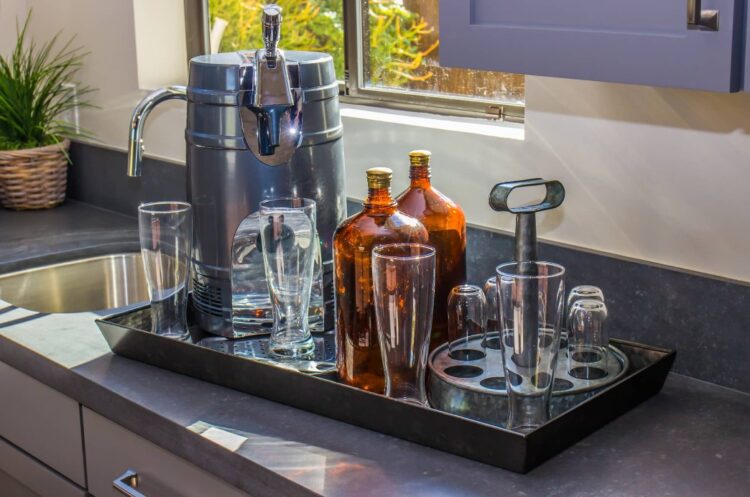
Another small beer tank designed for 5 liters (approximately 169 ounces or 14 pints). You can use that barrel with both mini and larger models of kegerators.
As a rule, the container is designed for one-time use at home or suitable for outdoor parties.
After the use, it should be sent for recycling.
– Sixth Barrel Keg
This barrel is also known as Sixtel or Torpedo keg. That barrel is only slightly bigger than the most popular Corny keg model: 5.16 gallons against 5 gallons in the Cornelius keg.
Another difference is the connection system: the ball lock keg is equipped with a ball connection system and the Sixth Barrel Keg has a pin system. There are small pins around the pin lock that are used to fix the connection, while the ball lock is equipped with ball bearings that move from the top of a special gas post.
Parameters: height of the barrel – 23⅜”, diameter – 9¼”, weight – 58 pounds (filled with beer) and 16,5 pounds (empty).
Due to its compact size, the tank is often used in homebrewing as well as on an industrial scale: in small breweries or bars.
These containers are also well stacked, which is important in terms of easy storage and transportation.
– Quarter Barrel Keg
This model is available in two versions: Slim (or Tall) Quarter or Pony (aka Stubby) Quarter. A Pony keg is considered the more traditional option. The difference lies in the shape and parameters of the containers: Slim Quarter is higher and thinner – 23 ⅜ ” x 11 ⅛ “.
The Stubby Quarter, in turn, has a more squat-like shape: 16 ⅛ x3⅞. The weight of the tank is 87 pounds (full) and 22 pounds (empty).
Choosing the right type of Quarter Barrel Keg is a matter of your personal preferences. For example, some people like to use Tall Quarter because of space limitations, while other brewers prefer to work with Pony keg.
Whatever you choose, both models are designed for 7.75 gallons. This is about 62 pints of beer or 83 bottles of 12 ounces. This volume is great if you have already established a production and want to produce quite a lot of beer.
We have listed the most popular models that are used in homebrewing. In addition, however, there are two types of barrels for commercial use:
- Half Barrel Keg, which holds 15.5 gallons of beer, equals 124 pints or 165 bottles of 12 ounces. This is the most popular model used on an industrial scale.
- 50 Litre Keg, designed for 105 pints or 140 bottles of 12 ounces. Such barrels are popular in European breweries.
Beer Keg Sizes and How to Choose the Right One?
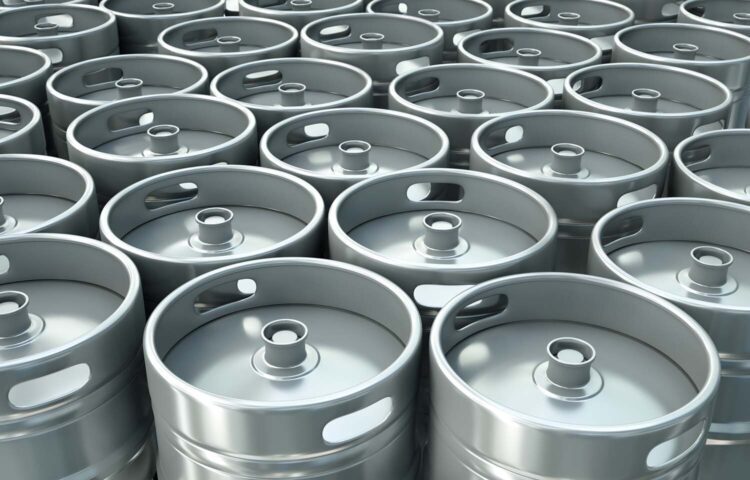
Before purchasing a suitable container for storing and transporting hopping beverages, first answer the following questions:
How much beer are you planning on making?
The type and quantity of kegs depend on it.
What metal should they be made of?
Aluminum or stainless steel barrels are the most commonly found on the market. We recommend buying steel tanks. They are more reliable and durable.
Do you have a kegerator yet?
In case you do, the kegs have to be selected under the model of the kegerator.
If not, consider cooling your drinks with this equipment.
What types of beer are you planning to produce?
Different barrel models have their own type of keg coupler, designed for bottling different varieties of beer.
- The D-type is used for most American beers such as Molson, Budweiser, Coors, Yuengling, and Miller.
- S-type is needed for most European varieties such as Pilsner Urquell and Heineken, Stella Artois, and Newcastle Brown Ale.
- U-type was developed specifically for the Guinness, Magners Cider, and Harp Lager.
- A-type is intended for German varieties ─ Löwenbräu, Hoegaarden, Bitburger Pilsner, etc.
- G-Type is used by some British and American breweries, and M-type is needed to produce several German varieties.
If you still have any doubts about the size of the keg that will suit your needs, please contact the popular brewer’s Beverage Craft company. This brand has been engaged in beer equipment for more than 10 years and sells it in Canada and the USA, offering consistently high quality and a large range of products to its customers.
Here you will be helped to choose the right type of capacity and other related equipment, which is necessary for your draft beer system.
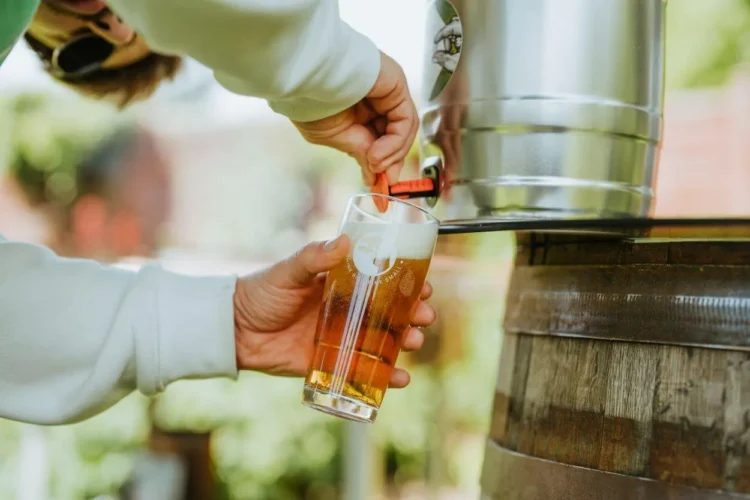
How Much Do Empty Beer Kegs Cost?
As a rule, the larger the capacity, the more expensive it is.
The cost of a ball lock keg: $135-225. The stackable version of this barrel costs about $190. The sixth barrels cost about $115, and the quarter barrels are estimated to cost $140-175.
Contact Beverage Craft to find the model that will suit you for its price and quality!
 Hi Boox Popular Magazine 2024
Hi Boox Popular Magazine 2024
